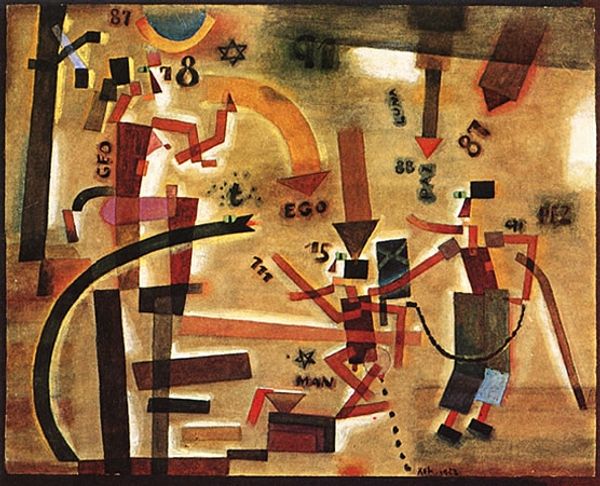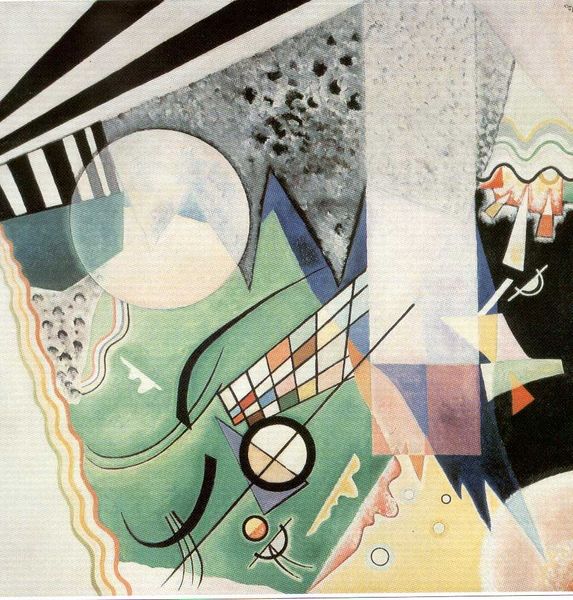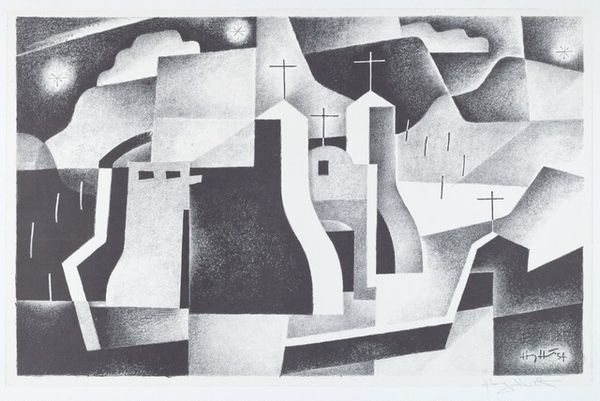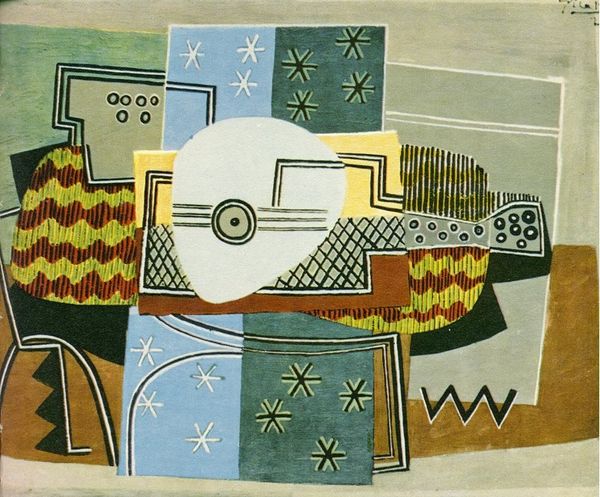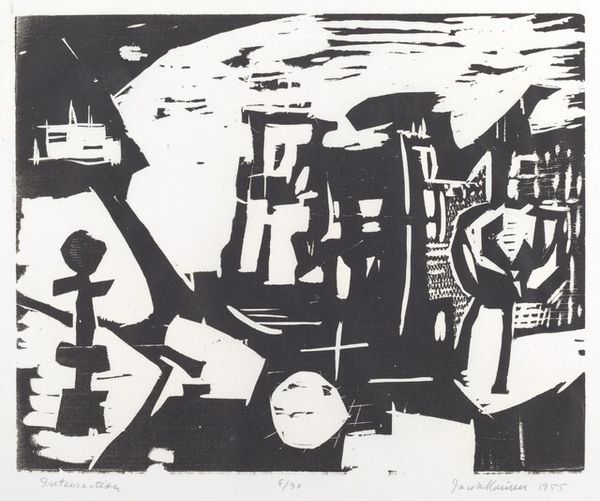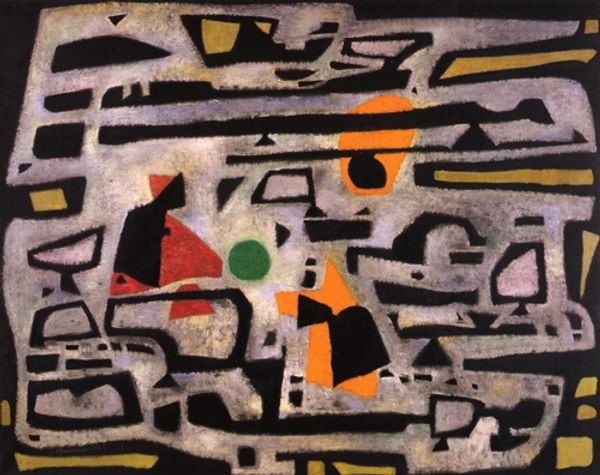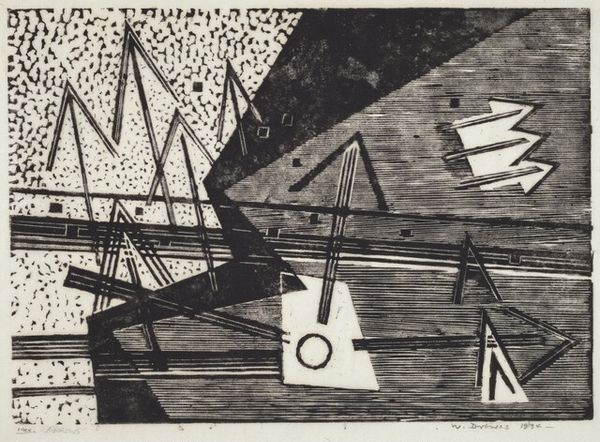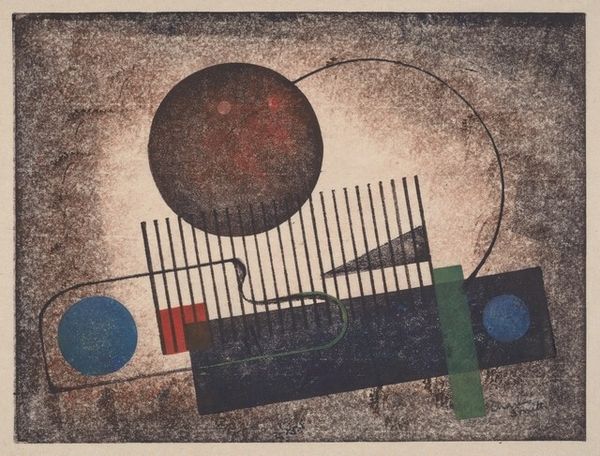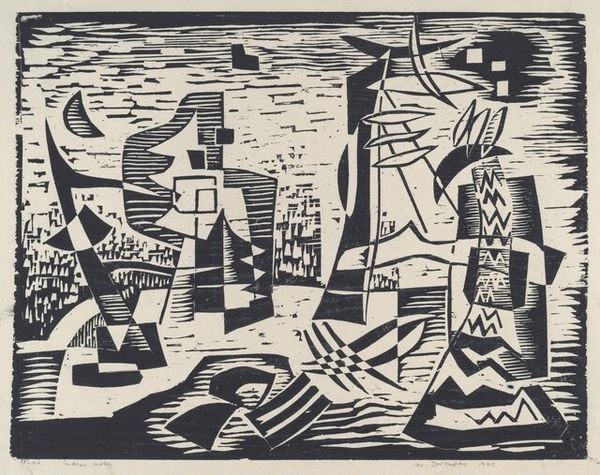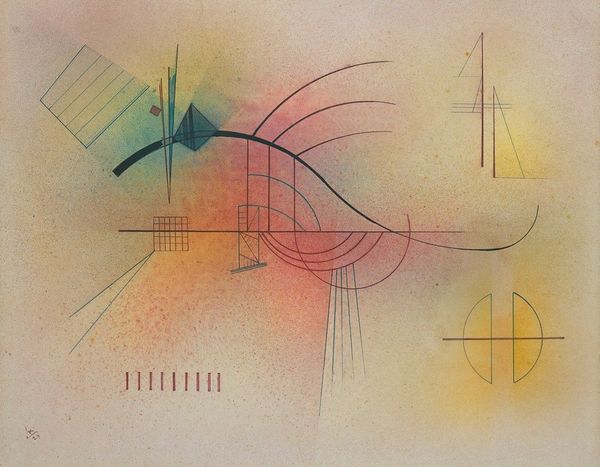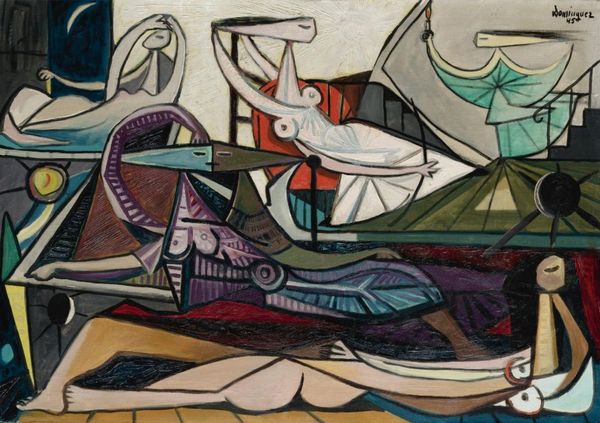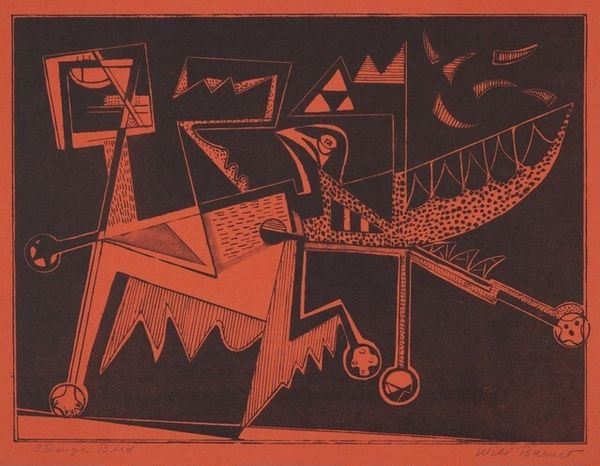
Dimensions: 40.5 x 56 cm
Copyright: Public domain
Curator: Kandinsky's "Capricious," a mixed-media piece created around 1930, certainly throws the viewer into an interesting visual world. What's your initial response to it? Editor: It strikes me as almost dreamlike—a kind of controlled chaos. There's this muted, earthy background, and then these very sharp, distinct shapes cutting through it, creating a tension. Curator: Indeed. Considering the historical moment of its creation, this painting exists between Kandinsky's Bauhaus period and his later Parisian period. You see hints of both: the geometric forms characteristic of the Bauhaus, yet also an emerging organic quality foreshadowing his surrealist-influenced Parisian work. Do you see echoes of that tension reflected in the symbolism? Editor: Absolutely. The shapes themselves seem to carry conflicting associations. A burst of straight lines sits right above the curved wave patterns—that juxtaposition has a destabilizing feel, even if the composition is quite balanced overall. Curator: Well, Kandinsky deeply believed in the "inner necessity" of art—that colors and shapes had their own inherent spiritual meaning. The triangles, the circles, the lines, they aren’t just decorations; they represent a symbolic language he crafted. Think of the use of line itself. For Kandinsky, line wasn't just a boundary, it possessed dynamism, directed energy, the capacity for either harmony or conflict, wouldn't you say? Editor: Certainly, the diagonal lines, so insistent and regimented, do create a feeling of force—like a torrent. But then you've got the soft circle in the upper left, a much more calming presence. And notice the small stylized images above. It’s all these conflicting systems rubbing against one another. Were there socio-political influences visible in abstraction in that period? Curator: Oh, of course! Post World War I Europe, anxieties ran high, the Weimar Republic struggled, totalitarian ideologies gained traction. So many artists, Kandinsky included, sought a visual language independent from nationalistic imagery and cultural institutions that had, to some extent, supported the war machine. Editor: So it’s almost a rebellion through form? Curator: Precisely. He sought a kind of universal visual expression beyond borders or ideologies. The emotional effect is complex. Editor: Complex indeed! I think its sustained appeal comes from precisely this visual juggling act. Thanks to his experimentation, viewers get to construct their own symbolic lexicon of hope, destruction, peace and disquietude! Curator: Yes, I concur. His impact ripples even today. A challenging journey into a landscape that's at once intellectual, historical, and highly emotionally engaging.
Comments
No comments
Be the first to comment and join the conversation on the ultimate creative platform.
